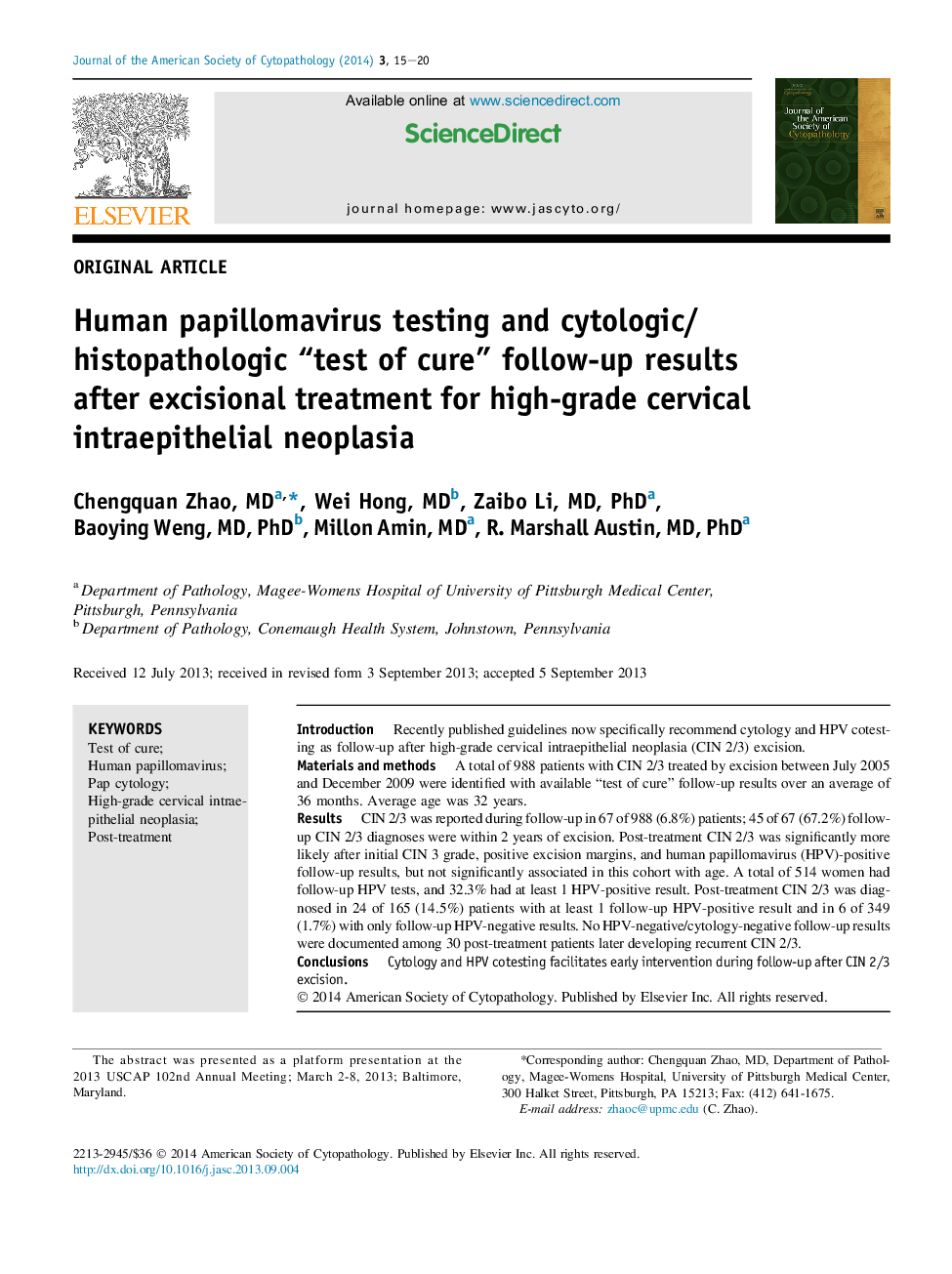| Article ID | Journal | Published Year | Pages | File Type |
|---|---|---|---|---|
| 2776434 | Journal of the American Society of Cytopathology | 2014 | 6 Pages |
IntroductionRecently published guidelines now specifically recommend cytology and HPV cotesting as follow-up after high-grade cervical intraepithelial neoplasia (CIN 2/3) excision.Materials and methodsA total of 988 patients with CIN 2/3 treated by excision between July 2005 and December 2009 were identified with available “test of cure” follow-up results over an average of 36 months. Average age was 32 years.ResultsCIN 2/3 was reported during follow-up in 67 of 988 (6.8%) patients; 45 of 67 (67.2%) follow-up CIN 2/3 diagnoses were within 2 years of excision. Post-treatment CIN 2/3 was significantly more likely after initial CIN 3 grade, positive excision margins, and human papillomavirus (HPV)-positive follow-up results, but not significantly associated in this cohort with age. A total of 514 women had follow-up HPV tests, and 32.3% had at least 1 HPV-positive result. Post-treatment CIN 2/3 was diagnosed in 24 of 165 (14.5%) patients with at least 1 follow-up HPV-positive result and in 6 of 349 (1.7%) with only follow-up HPV-negative results. No HPV-negative/cytology-negative follow-up results were documented among 30 post-treatment patients later developing recurrent CIN 2/3.ConclusionsCytology and HPV cotesting facilitates early intervention during follow-up after CIN 2/3 excision.
